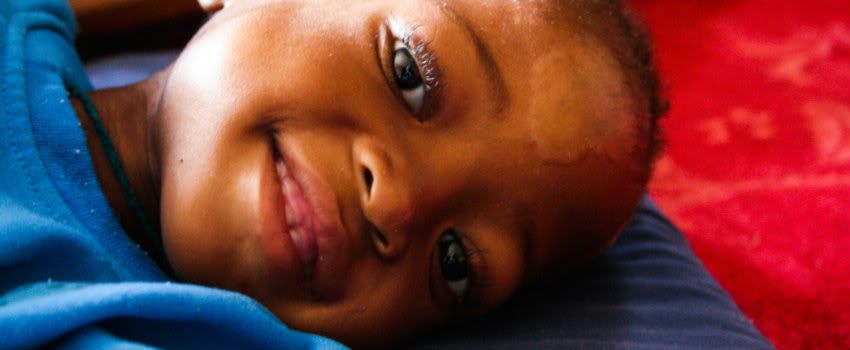As a visiting 4th year
medical student with intention to become an Emergency Medicine physician, I
have spent much of the past school year as a student learning in various
Emergency Departments. During these rotations I have been taught the importance
of gestalt and gut reaction, the importance of walking into a room and
determining “sick” or “not sick”…and quickly.
This is most important in the case of young babies who cannot tell you
what is hurting or why they feel bad. My experience at TTL has stressed the
importance of this, especially here in Mokhotlong and surrounding villages
where there are both communication challenges and limited medical resources.
The severity of illness and malnutrition seen here in combination with the limited medical resources has made for a particularly frightening scenario for a medical student from the U.S. who is currently oriented to the “better safe than sorry” mentality of teaching hospital physicians at home. Thorough work-ups, complete labs and empiric treatments become the standard, but here I’ve found it’s just not that easy, in fact it’s not really even an option. Here the challenge becomes determining when the benefits of the safe-home will outweigh the risks of taking a child away from his family and community. When does a child require a visit to the Mokhotlong hospital versus staying home to be seen at their local clinic? When are they big enough? When are they too small? When is their heart rate or breathing rate too high? Then once the decision is made comes yet another challenge…now what can be done to help?
One of my favorite experiences while being here at TTL has been the opportunity to see the kids here at the safe-home beginning to thrive with consistent nourishment and the loving attention of the Bo’Me. Initially I saw this and worried about how the children were able to adjust once returning home to the challenges of life without these consistencies. Thankfully, on one of our outreach treks we had the chance to check in on a 3 year old former safe home resident. He was quite possibly the happiest, healthiest-looking little guy we saw during the entire month out there. He was at home with his father who cared for him and was doing exceptionally well. They both seemed so grateful for TTL; I loved the opportunity to see the hard work of the Bo’Me and all the staff at TTL really paying off. It’s also great to know that the wonderful kiddos we’ve had the chance to get to know here at the safe home can go home and continue to thrive and be happy like that little boy we saw.
Lastly, I would like to share a few
of the small things the kids have taught me this month. 1.) When you hear
music, just drop everything and dance it out. It doesn’t really matter if you
were busy reading a nice book, throwing a ball or playing with a puppet or
something…dancing is more important. 2.) If something upsets you, take 10
seconds to yourself, put your face on the floor and let out the frustration.
Then just move on and go about your business. 3.) Crawling is a process that
starts with keeping your head up and smiling a lot, and one day we will all get
there, even Tsepang. 4.) Kids are learning even when it looks like they are
paying no attention at all. Our attempt to teach some of the older kids the
body parts necessary for the classic “head, shoulders, knees and toes” ditty
took mere weeks. Success was finally achieved, however, about nothing is more
rewarding than one of the little ones proudly marching up to you in the morning
and pointing to the center of their face and asking, “nose?” Yes Tlatso, indeed
it is! 5.) No matter what, smiling is always an option.
******
Kelly Hughes is a 4th Year Medical Student at the University of Indiana - Purdue. TTL appreciates all her great work and will continue to reread and reread the last paragraph of her post for solid advice.



